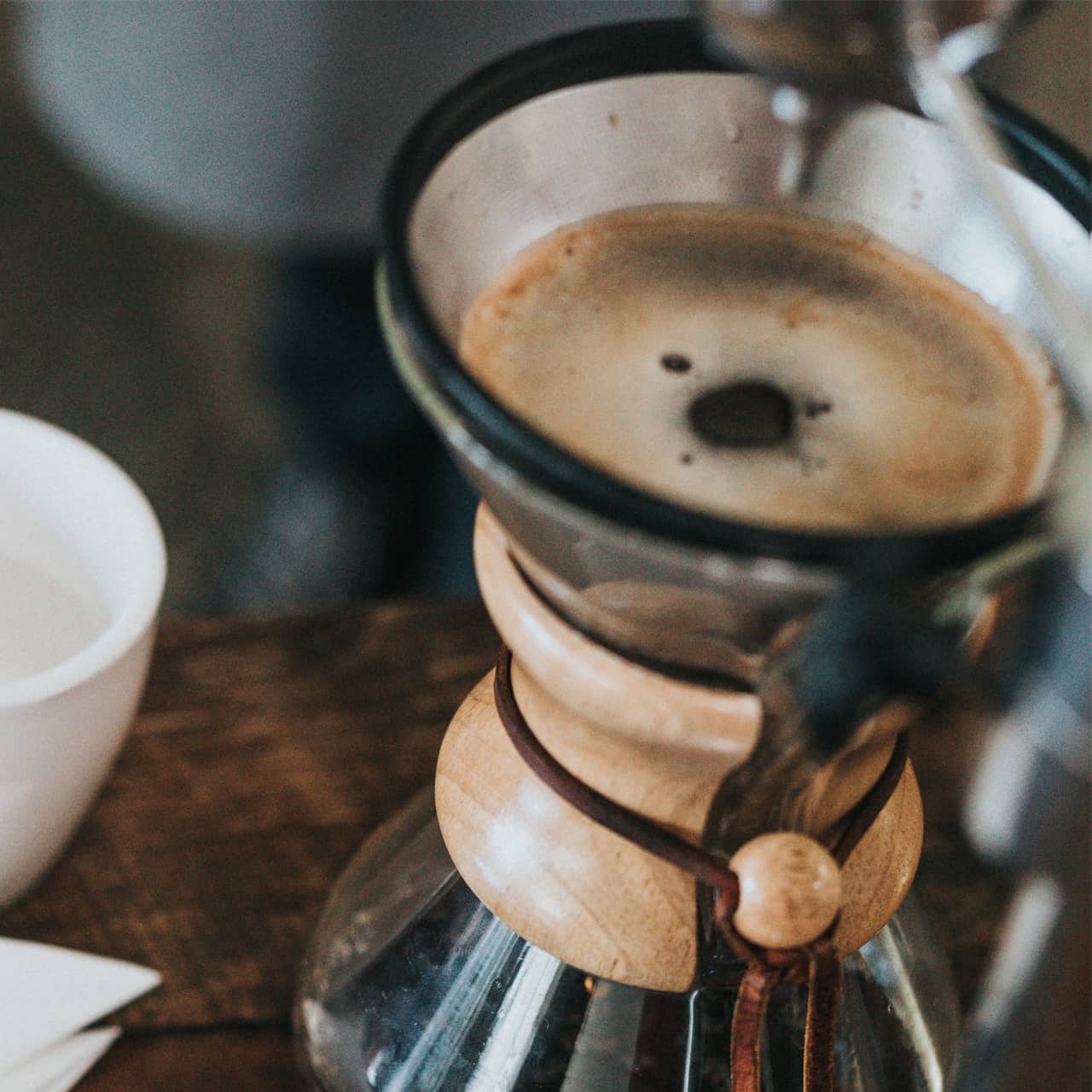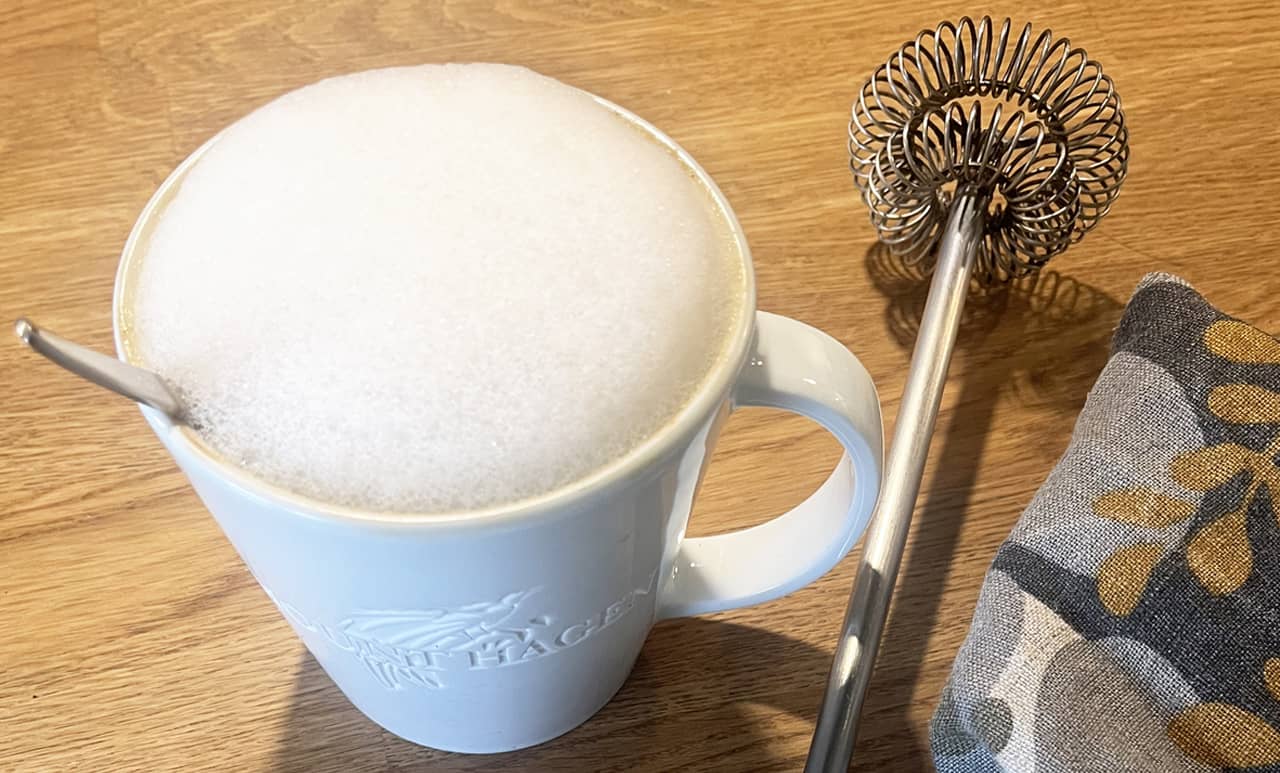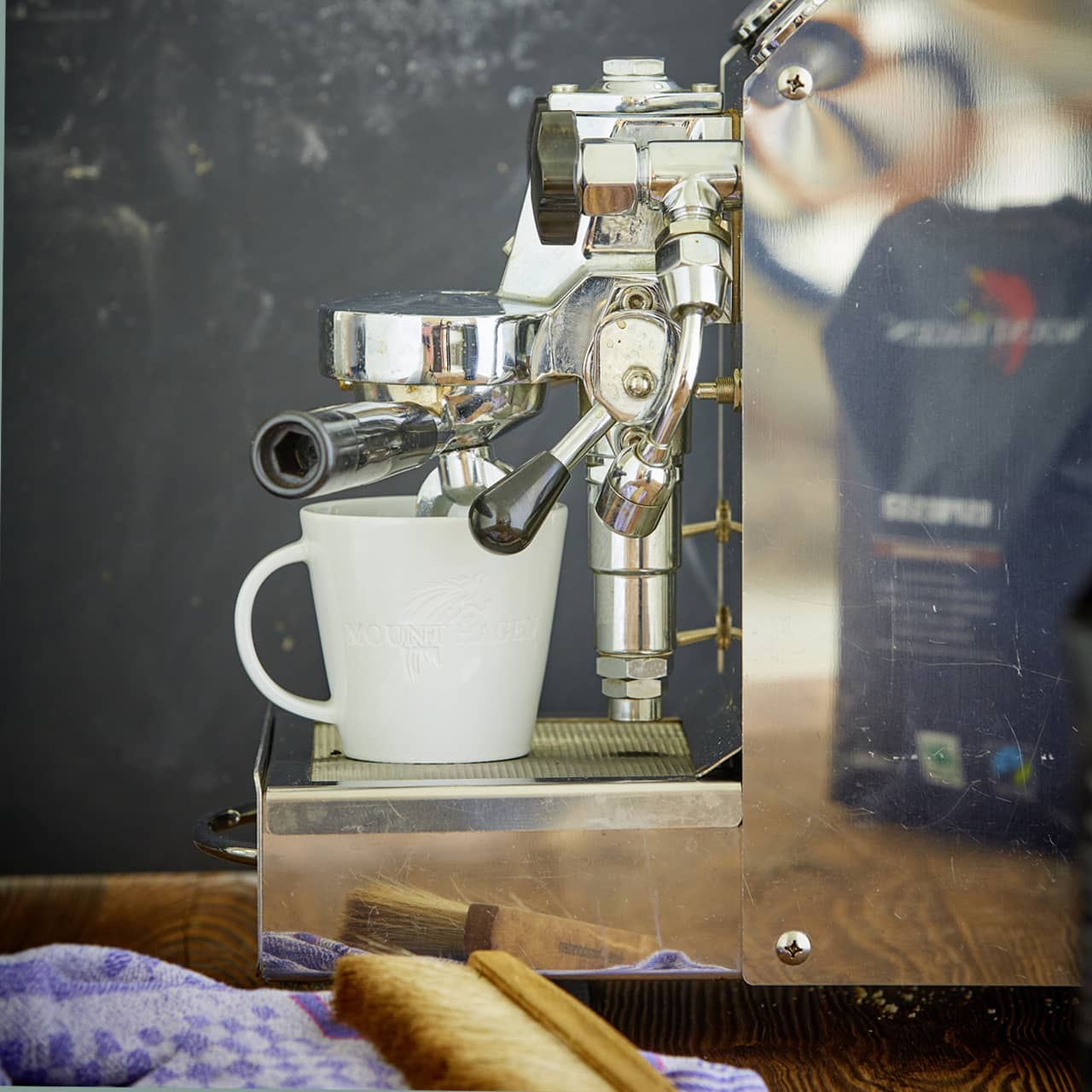- Coffee prep
Black coffee – prepared green.
“You can’t make a difference as an individual anyway.” “I don’t want to be told how to live my life.” “What good is it if we….” I keep hearing phrases like these – in one form or another – when it comes to the big issue of sustainability. And now even brewing coffee should be sustainable?

Barbara Beiertz
Environmentally friendly coffee brewing - why?
Of course, nobody wants to be told what they should and shouldn’t do/eat/drink/wear. But since the Germans’ favorite drink *** is, to be honest, a luxury product that cannot be grown regionally and has a rather mediocre environmental footprint due to transport alone, sustainable coffee making can achieve a great deal. Without sacrificing anything and without any loss of taste.
Here, we’ll show you how to quickly get your morning elixir of life into the green zone.
What the right coffee can do.
The biggest lever for a more environmentally friendly footprint when drinking coffee is the coffee itself. Organic coffee from controlled organic or biodynamic (Demeter) agriculture promotes soil health and biodiversity, minimizes water consumption, deforestation, even saves energy (because no artificial fertilizers, pesticides, herbicides are used), and thus also CO2.*
In the worst case, coffee cultivation accounts for around 70 percent of the environmental impact of a cup of coffee, but in the best case, it accounts for just one percent.*
That’s why all Mount Hagen coffees are 100% organic or Demeter-certified. And 100% fair. We wouldn’t like the best organic coffee if the coffee farmer couldn’t make a living from growing it.
But: Fair trade coffee is not organic coffee. So, look out for both seals when buying coffee.
If you would like to know more about the most trustworthy organic seals and fair trade coffee – take a look at these blog posts:
So, let’s brew a cup of organic fair trade coffee in a veeeery sustainable way.
What does “sustainable coffee preparation” mean?
The most important aspects of “sustainability” or eco-friendliness (a term I personally much prefer) are
- Reducing waste
- Saving energy
- Conserving resources
- Longevity of the accessories
- Recycling
When it comes to coffee and waste, you immediately think of coffee capsules and disposable plastic to-go cups. I think everyone knows by now that these two produce absurd mountains of waste**. So I’ll leave these two aspects out of this discussion.
But if you want to know more about to-go cups, you can find a detailed article on the subject here.
So let’s start with the garbage.

Less waste when making coffee.
The coffee filter.
Whether you use a coffee machine, hand filter, Aeropress or Chemex – if you want to brew drip coffee, you need a filter. And it usually needs filter paper. Unless you use reusable filters made of fabric or metal. They are now available for all pour-over brewing methods, including Aeropress and Chemex.
Here, we explain in detail what effect the different filters have on the taste of the coffee: Filter facts.
After making coffee, it is best to dispose of the coffee grounds in the garden, use them as a base for a scrub or (if necessary) throw them in the organic waste garbage can. Then rinse out the permanent filter, dry it and you’re done! Until the next pot. This saves a lot of paper and money in the long run.
Tip: Don’t flush coffee grounds down the drain. There is a persistent rumor that it cleans the pipes, but the opposite is true (ask my plumber).
Preparation methods without filters:
In addition to the reusable coffee filters, you can of course also make your morning coffee with the French press and the stovetop coffee maker (Bialetti) – they do not require a filter and are even considered the most environmentally friendly way of making coffee. Because you only need hot water or a hotplate. However, the coffee is then not a filter coffee, but a very aromatic, intense full immersion or almost espresso.In these two blog posts, you can find out what you need to know about these two preparation methods, how they work and how the coffee tastes:
The Packaging.
To be a heavy drinker or not is the question here. A single person with one cup in the morning obviously doesn’t need as much coffee as I do, for example (4-6 cups per person per day in a two-person household = at least 70 oz per month).
But it’s also clear that the bigger the bag, the less packaging waste. In addition, aluminum-free flavor bags, such as those from Mount Hagen, are of course also the better choice.
Tip: It is best to store the coffee in an airtight container in a cool, dry place. So, definitely not in the fridge, as it absorbs ambient odors very quickly (as for example the delicious smell of cheese).
Energy-saving tips for coffee fans.
Generally speaking: It is best to only make as much coffee as you actually drink. No matter which method you use. However: With both the French press and the coffee maker, the coffee does not taste good when half full. It is therefore advisable to invest in different sizes.
Preparing coffee with the stovetop coffee maker (Bialetti).
Nimm am besten heißes Wasser für den unteren Wasserbehälter, das spart Zeit und Energie. Zum Kochen dann einfach auf die richtige Herdplatte – also nicht zu groß – stellen. Fertig.
French press.
Auch hier gilt es, nur so viel Wasser zu erhitzen, wie du wirklich für deinen Kaffee aus der Frenchpress benötigst. Auch das spart Energie. Schließlich brauchst du ja für diese Zubereitungsmethode nicht mehr als Kaffeemehl und heißes (nicht mehr kochendes) Wasser. Übrigens: Kennst du schon den Umrührtrick für den perfekten Frenchpress-Kaffee? Nein? Dann schau mal hier: „Würzig, kräftig und ganz einfach: Kaffee aus der Frenchpress“.
Coffee machines and portafilters:
Investing in high-quality, energy-efficient machines definitely pays off in terms of energy consumption. Here’s a very simple tip: Switch it off. Don’t leave the coffee in the pot on the stovetop and let it turn to tar. First of all it tastes awful and second of all consumes energy unnecessarily. If necessary, pour the coffee into a thermos flask to keep it warm. Switching it off also applies to the portafilter machine and the fully automatic machine – for the cup warming function. The cups can be heated very well with the hot steam, without having to heat the machine.
The machine itself should be switched off completely if it is not used for more than 2 hours. Basically, such large machines are only “worthwhile” if you drink a lot of coffee or espresso in single portions – and only over long periods of time. For example, in the office, in the editorial office (or at my place).

Milk or milk frother.
Basically, everyone has to decide for themselves whether to use cow’s milk or plant milk for cappuccino and the like. Oat and pea milk definitely have the better eco-balance because they are native plants which, if they come from organic farming, are much more environmentally friendly. With soy, you should pay close attention to organic cultivation in Europe. And almond and rice milk generally have a poorer water balance. That’s just a brief overview of plant milk vs. cow’s milk. Now the milk needs to be frothed:
If you don’t have a portafilter with a steam wand or a fully automatic machine, but still want milk foam for your coffee – manual milk frothers need nothing more than hot milk. There are very good, practical models made of glass or metal that look like a French press and work in a similar way (piston jug). Depending on the type of material, they can be placed directly on the stove to heat up (this does not apply to the glass model, of course).
The Molamano is a kind of advanced, indestructible whisk that produces really great foam. Also perfect for on the go in combination with the stove top coffee maker or French press.
Whether you need an electric milk frother depends on the quantities you want to produce “at the same time”. Basically, they are only worthwhile if you have really heavy drinkers in your household or want to supply an entire office with cappuccino.
That leaves the small battery-operated whisks. We don’t like using them so much because they don’t heat the milk, so you have to heat it up first and then whisk it. The result isn’t that great and batteries … well…
Which brings us to the topic of conserving resources. This part of sustainable coffee making is actually linked to the next one: The durability of the accessories.
Saving resources with caffeine? No problem.
Longevity, durable materials & care.
It’s actually logical: The longer you can use a coffee accessory, the fewer resources you use and the more environmentally friendly you make coffee.
Investing in high-quality, durable materials (i.e. not plastic) and coffee machines is not only worthwhile in terms of energy efficiency. For example, I still use my grandmother’s porcelain hand filter – it must be at least 30 years old by now. Admittedly, I use it relatively rarely, as I’m an espresso fan.
But our portafilter machine, which really does produce its delicious espresso for several hours every day, is now a good 20 years old. Once a year, it gets a general overhaul – and it just keeps running and running and running…
Conclusion: High-quality materials, care, and regular cleaning pay off and make an environmentally friendly difference. Which of course also applies to stove top coffee makers, French presses and the like. Aluminum, stainless steel and as little plastic as possible is the motto here.
We have also put together a few blog articles for you on how best to clean such treasures and why not every household remedy is suitable for every machine. Take a look here:

The right dosage.
Just as logical. Only use as much water and coffee as you really need. It’s not just annoying if you throw away half a pot of coffee. It’s also very easy to avoid. By brewing small portions (e.g. with the Aeropress) or with the small stove top coffee maker, which is also available for just 1-2 cups.
Of course, coffee dosage is always a matter of personal taste, but if you adjust your portafilter to your favorite coffee, for example, you are guaranteed not to waste a single bean.
Recycling.
Pure coffee grounds can be put to very good use. In the garden as fertilizer or against pesky snails and the like. But you can also do a lot with coffee grounds when it comes to DIY cosmetics. The only important thing is to dry them well so that they don’t go moldy.
Here are a few life hacks for recycling your coffee grounds:
Sustainable coffee making is easy.
Conclusion:
Making coffee can also be green, energy-saving, andwaste-free. The biggest sustainability effect comes from the coffee itself. If you opt for organic or Demeter coffee, you have already taken a big step in a more environmentally friendly direction. Add to this a portion of appreciation for coffee as a luxury good, a little thought, and our tips for more sustainability when making coffee.
Do you have any more tips for eco-friendly coffee making? Leave us a comment. We are looking forward to it.
Sources:
*164 Liter pro Kopf im Durchschnitt (Quelle: Statista 2024)
**www.fibl.org/de/infothek/meldung/vorteile-des-biolandbaus-auf-den-punkt-gebracht
***www.br.de/radio/bayern1/inhalt/experten-tipps/umweltkommissar/kaffee-kapseln-pads-umwelt-100.html
****Kaffeekapseln: Auf 6,5g Kaffee kommen durchschnittlich circa 2,5g Aluminium oder Kunststoff für die Einzel-Verpackung und noch mal 1,5g Papier für die Umverpackung. Das macht also auf 6,5g Kaffee unglaubliche 4g Verpackung. To-go-Becher: „… jede Stunde… 320.000 verbrauchte Coffee to go-Becher“ (www.duh.de/themen/recycling/verpackungen/becher/)



